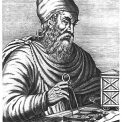EXPECTED LEARNING OUTCOMES
The course provides the student with knowledge of the understanding of physical principles and the phenomena of fluid mechanics. In particular, after the successful completion of the course, the student /tria will be able to:
• Have a supervision of the phenomena that the mechanics of fluids heal
• Understand the low-key view of Navier Stokes equations and be able to associate mathematical and engineering concepts for the modeling of physical problems of fluid engineering.
• Give a mathematical description of the movement of real fluids for basic flows based on Navier-Stokes equations by applying appropriate simplifications for engineering problems.
• To deal with fluid engineering problems in cases of static, and in cases of movements in a small and large number of Reynolds.
• To be able to simplify theoretical knowledge and apply it to basic fluid engineering problems in the laboratory.
• Be able to interpret phenomena and measure specific physical amounts in flows that occur in mechanical engineering problems through laboratory exercises.
General Competences
Search, analysis and synthesis of data and information, using the necessary technologies with the combination of laboratory exercises and theoretical knowledge.
Adapt to new situations
Decision-making
Autonomous work (in the laboratory)
Promoting free, creative and inductive thinking when studying specific fluid engineering problems
SYLLABUS
Theory: (4 hours/week, total: at least 13 weeks)
Basic properties of fluids.
Static fluids, hydrostatic forces on surfaces.
Kinematic ideal fluids, Stokes operator, Bernoulli theorem, continuity equation and stream function. Euler equations. Potential function.
Real fluid kinematics: correlation of deformities trends. Dimensional analysis and similarity, non dimensionalization. Limit conditions. Navier Stokes real fluid movement equations. Sleepy and turbulent flow.
Incompressible flows in pipelines, Hagen-Poiseuille theory. Application to simple fluid engineering problems. Theoretical approach to laboratory exercises.
Laboratory exercises: (1 hour/week, total: at least 13 weeks)
Measurement of density and viscosity, application of the law of Stokes. Measurement of hydrostatic forces on solid surfaces. Bernoulli Theorem. Buoyancy and Flotation. Impact of a water jet on a surface. Free and forced warp flow. Air flow in convergent divergent nozzle. Supply measuring devices. Measuring instruments, piezometers and Pitot tubes.
